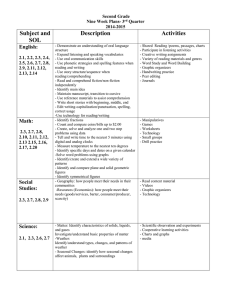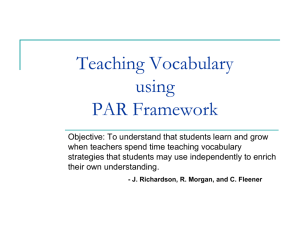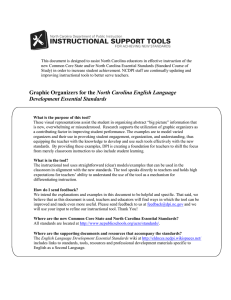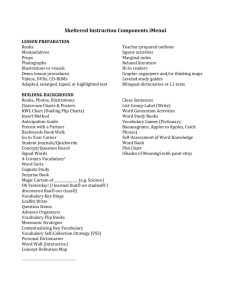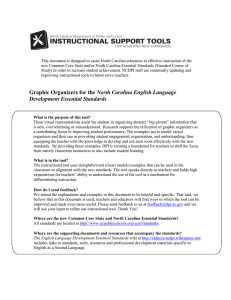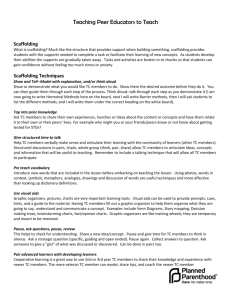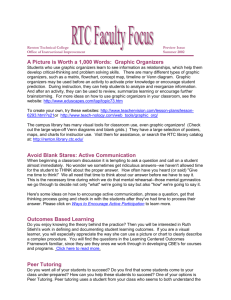Reading Comprehension Strategies to Use with English
advertisement
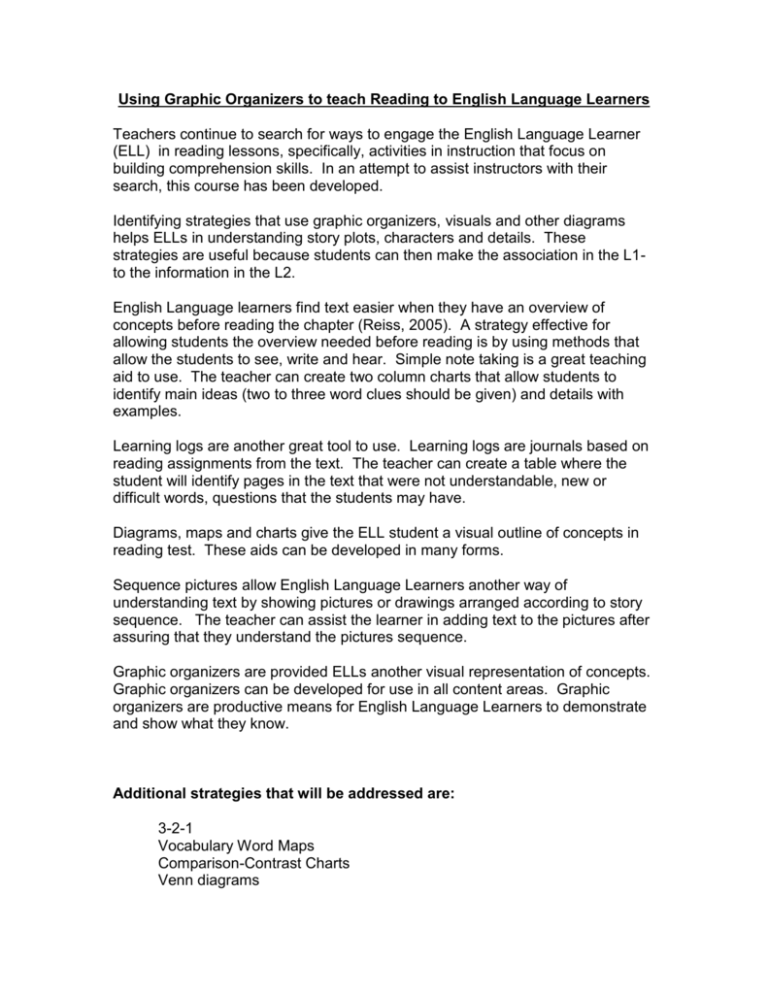
Using Graphic Organizers to teach Reading to English Language Learners Teachers continue to search for ways to engage the English Language Learner (ELL) in reading lessons, specifically, activities in instruction that focus on building comprehension skills. In an attempt to assist instructors with their search, this course has been developed. Identifying strategies that use graphic organizers, visuals and other diagrams helps ELLs in understanding story plots, characters and details. These strategies are useful because students can then make the association in the L1to the information in the L2. English Language learners find text easier when they have an overview of concepts before reading the chapter (Reiss, 2005). A strategy effective for allowing students the overview needed before reading is by using methods that allow the students to see, write and hear. Simple note taking is a great teaching aid to use. The teacher can create two column charts that allow students to identify main ideas (two to three word clues should be given) and details with examples. Learning logs are another great tool to use. Learning logs are journals based on reading assignments from the text. The teacher can create a table where the student will identify pages in the text that were not understandable, new or difficult words, questions that the students may have. Diagrams, maps and charts give the ELL student a visual outline of concepts in reading test. These aids can be developed in many forms. Sequence pictures allow English Language Learners another way of understanding text by showing pictures or drawings arranged according to story sequence. The teacher can assist the learner in adding text to the pictures after assuring that they understand the pictures sequence. Graphic organizers are provided ELLs another visual representation of concepts. Graphic organizers can be developed for use in all content areas. Graphic organizers are productive means for English Language Learners to demonstrate and show what they know. Additional strategies that will be addressed are: 3-2-1 Vocabulary Word Maps Comparison-Contrast Charts Venn diagrams History Maps-Story Frames 5 W’s Story Map K-W-L Charts Inquiry Chart Graphic Organizers Picture Walks TPR Storytelling Story WEB
